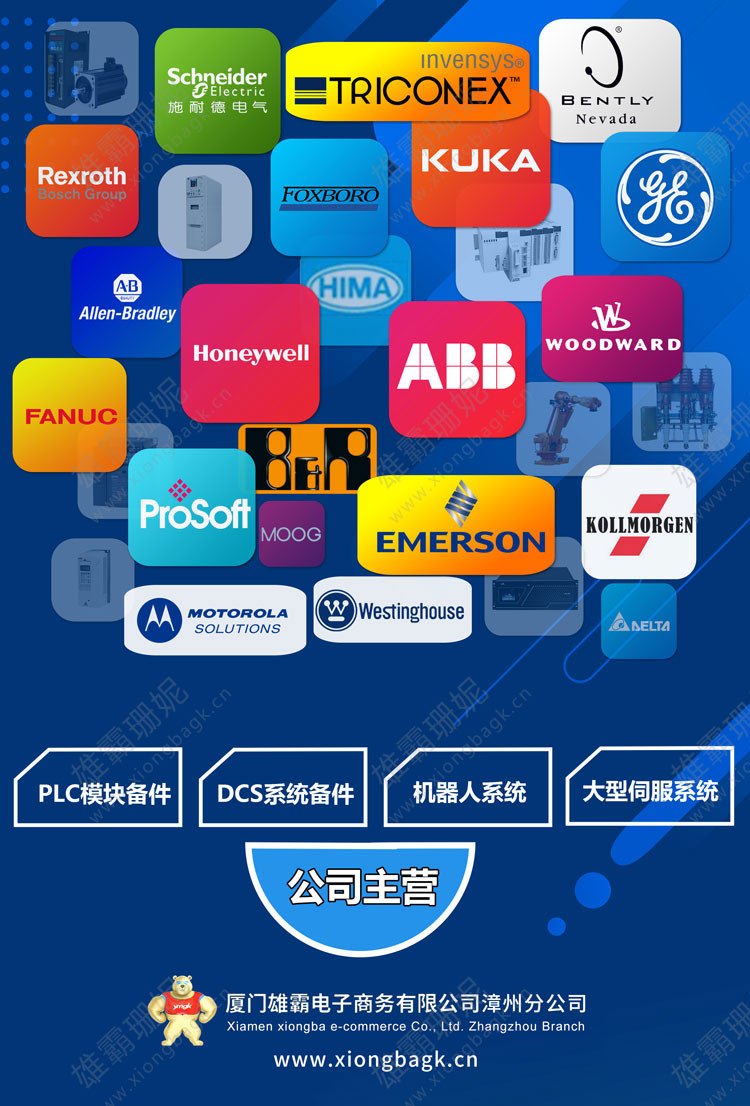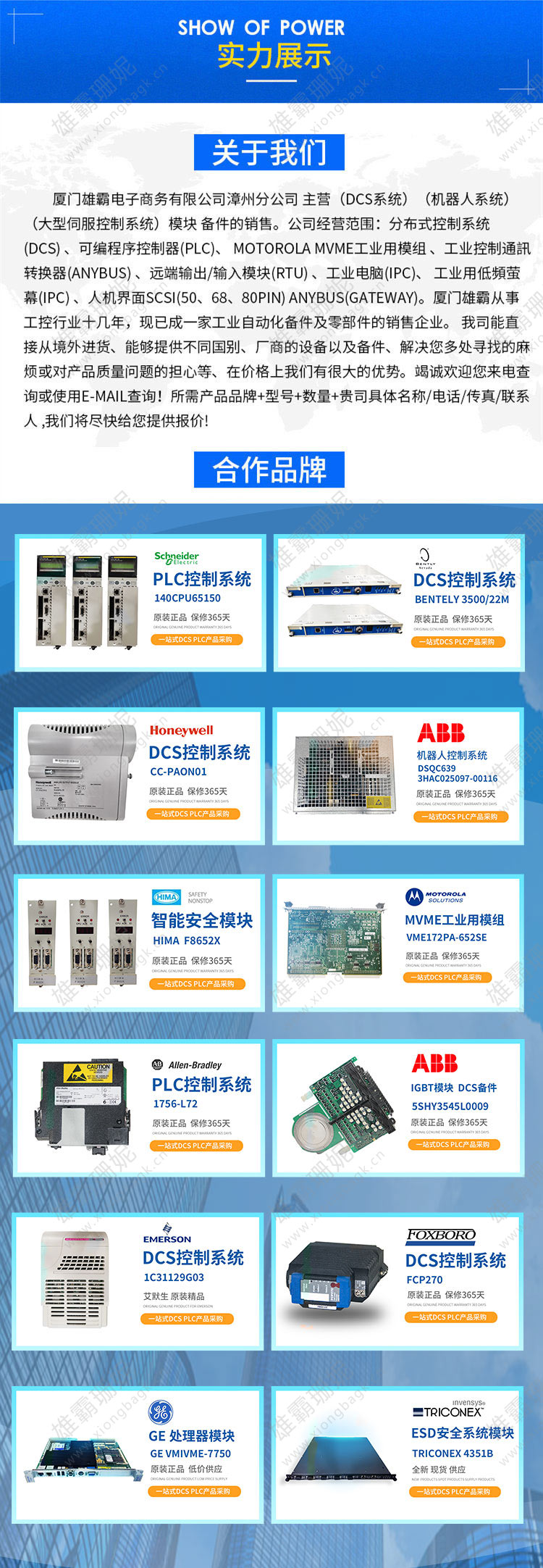产品详情
| 品牌 | 品名 | 产品型号 | 订货号 |
| ABB | 模块 | PFEA113-65 | 3BSE028144R0065 -1 |
| 产地 | 可售卖地 | 是否进口 | 保修期 |
| 美国 | 全国、国外 | 是 | 一年 |
| 发货地点 | 发货方式 | 使用方式 | 适用行业 |
| 厦门 | 顺丰快递 | 调试安装 | 电厂钢厂水泥厂船舶造纸 |
| 服务优势 | 国外进口 、 备货供应、 | 价格合适、品质可靠 | 订货 |
| 产品特点 | 一手货源、 按型号供货 | 售后有保障 | 何经理180,5988-4797 |

PFEA113-65
张力控制对在两个加工设备之间作连续运动或静止的被加工材料所受的张力进行自动控制的技术。在各种连续生产线上,各种带材、线材、型材及其再制品,在轧制、拉拔、压花、涂层、印染、清洗以及卷绕等工序中常需要进行张力控制。张力控制可以是恒张力控制, 也可以是变张力控制。变张力控制是指张力按某一预先确定的规律变化,或根据工艺需要随时改变, 或作为自动控制系统的一个参量参与调节的张力控制技术。
直接张力控制系统
In order to control the tension, it is necessary to construct a tension control system. Because tension can only be formed between two (or more) process equipment with driving (or braking) torques, the tension control system is constructed on the basis of two drive control systems. One of the transmission control system as the speed reference of the tension control system, called the speed reference system, and the other transmission control system according to the tension requirements to establish the load, the formation of tension, in essence, the speed of the speed reference system according to the required tension to follow the speed, called the tension controllable speed following system. The task of tension control is generally placed on the latter system, so people are accustomed to only referring to the latter as the tension control system.
Tension control systems are varied due to different applications, equipment and composition principles. However, according to the structure and control principle, it can be roughly summarized into three categories: direct tension control system, indirect tension control system and looper tension control system.
Direct tension control system
The system realizes the closed-loop feedback control of tension through the tension detection link (tension detection sensor). The direct tension control system between coiler and mill stands is shown in Figure 1 (a) and (b) respectively.
To achieve direct tension control, you must first have a tension detection sensor (tensiometer). It is mounted under the tension roll of the tension measuring mechanism (see Figure 1). The tensiometer is actually a pressure gauge, and there are many types of pressure gauges in use, such as piezomagnetic type, induction type, resistance strain gauge type, etc.
Direct tension control is mostly used in situations where the tension adjustment range is large, the accuracy is high and the tensiometer is easy to install, or when an indirect tension control system cannot be formed.
Sometimes, in order to improve the dynamic and static performance of tension regulation and expand the range of tension regulation, indirect tension control is used to achieve rough adjustment, play the role of disturbance compensation, and direct tension control is used to achieve fine adjustment.
Direct tension control and tension compound control are mainly applied to the tension control of strip and foil cold rolling machine or coiler of continuous processing line or between its frame and processing equipment.










